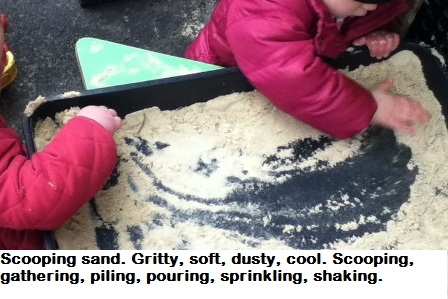June was a month of gardening at Mortlake. We were playing catch up on a spring that didn’t feel like spring, but June did and left us just wanting to be outside and mucking about with soil, seeds and water!
We love to garden at Mortlake. It is
relaxing, smells good, looks good, it holds our children’s attention for long
periods as we admire and discuss the colours, sizes, shapes, smells of the
plants and the bugs around. And, the children have the opportunity to have some
authorship over the way our outdoor area looks.
Gardening is an informal learning environment
where children can learn many things about the world by watching and
investigating. In gardening, children are surrounded by teaching moments; the
life cycle of various plants, the importance of worms, ladybirds and other
insects. We talk about caring for the plants and how what we do can impact on
them, not just as we water them to help them grow, but in our play too, having respect
for them and looking with our eyes, rather than our hands- and keeping balls
out of flower beds!
For our smaller children, the smells
and texture of the leaves and flowers are a fascination. It is hard to resist
the urge to squash, squish and thoroughly investigate a piece of plant the way
toddlers want to, so we harvest pieces they can look at and explore thoroughly
on a sensory table. We also grow big trays of cress with them and then use them
as the scene for small world play. They can romp animals about on real plants
and smell the intense fragrance of cress and feel the stringy wet texture of it
as they play.
Watching a seed grow into a plant is
one of the miracles of life that our children are fascinated in. The lifecycles
of the bugs in the garden amaze them and often we find things and we don’t know
what they are. Once we found a pale tussock moth caterpillar in the garden and
had no idea what it was, it was colourful and beautiful and we discussed at
length what type of butterfly it would turn into and what colours it would
have. Then we researched caterpillars with the children and discovered it was a
very plain moth!
Gardening also has a calming effect on children. It slows
them down as they connect with nature and have to work slowly, carefully and
thoughtfully as they bed seeds in, transfer seedlings from a small tub to a
bigger one or just carefully lean forward to smell a flower or a tomato.
Gardening is also good exercise and
great for developing their gross motor skills- bending, stepping, crouching,
leaning, lunging, digging, stretching, lifting, pulling. And also fine motor
skills; separating seeds, pinching and releasing, sprinkling and holding a flower
delicately.
Dolphins
gallery
Sea Turtles
gallery















































